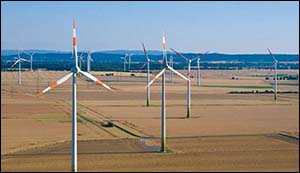Stanford study finds promise in expanding renewables based on results in three major economies
7. 12. 2015 | Stanford University | news.stanford.edu
Stanford energy experts have released a study that compares the experiences of three large economies in ramping up renewable energy deployment and concludes that renewables can make a major and increasingly cost-effective contribution to climate change mitigation.
The report from Stanford's Steyer-Taylor Center for Energy Policy and Finance analyzes the experiences of Germany, California and Texas, the world's fourth, eighth and 12th largest economies, respectively. It found, among other things, that Germany, which gets about half as much sunshine as California and Texas, nevertheless generates electricity from solar installations at a cost comparable to that of Texas and only slightly higher than in California.

Other conclusions of the report include:
- Germany's success in deploying renewable energy at scale is due largely to favorable treatment of “soft cost” factors such as financing, permitting, installation and grid access. This approach has allowed the renewable energy policies of some countries to deliver up to four times the average deployment of other countries, despite offering only half the financial incentives.
- Contrary to widespread concern, a higher share of renewables does not automatically translate to higher electricity bills for ratepayers. While Germany's residential electric rates are two to three times those of California and Texas, this price differential is only partly due to Germany's subsidies for renewables. The average German household's electricity bill is, in fact, lower than in Texas and only slightly higher than in California, partly as a result of energy-efficiency efforts in German homes.
- An increase in the share of intermittent solar and wind power need not jeopardize the stability of the electric grid. From 2006 to 2013, Germany tripled the amount of electricity generated from solar and wind to a market share of 26 percent, while managing to reduce average annual outage times for electricity customers in its grid from an already impressive 22 minutes to just 15 minutes. During that same period, California tripled the amount of electricity produced from solar and wind to a joint market share of 8 percent and reduced its outage times from more than 100 minutes to less than 90 minutes. However, Texas increased its outage times from 92 minutes to 128 minutes after ramping up its wind-generated electricity sixfold to a market share of 10 percent.
Read more at Stanford University
Image Credit: Wikipedia
-jk-




